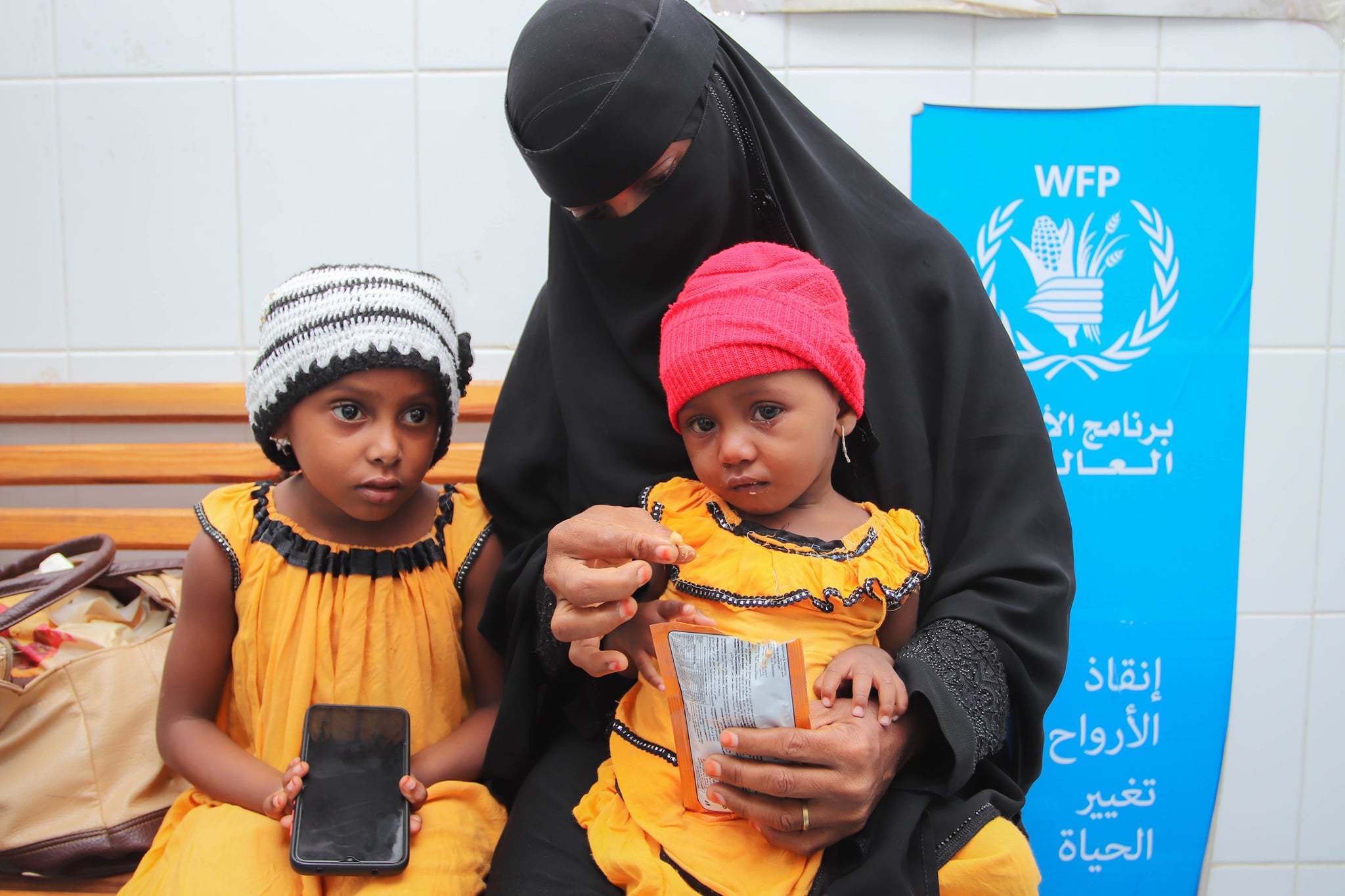Hunger Is Killing Yemeni Children: UN Warns (Report )
YemenExtra
The United Nations Food and Agriculture Organization (FAO), the United Nations Children’s Fund (UNICEF), and the World Food Programme (WFP) warned that acute malnutrition among the Yemeni children under the age of five has reached its highest levels in the south of the country during the last period.
“The results reached by the latest analysis of acute malnutrition, the IPC, show an increase in acute malnutrition in southern Yemen this year,” the aforementioned humanitarian organizations said in a joint statement issued by them.
This analytical study, which included 133 districts in the southern regions of Yemen only, in which 1.4 million children under five live, revealed an increase of about 10 percent in cases of acute malnutrition in 2020.
The study also revealed that the highest incidence of infection was in young children with severe acute malnutrition, which increased by 15.5 percent during the year 2020; thus, placing at least 98,000 children under five years of age at risk of death if not urgently treated for severe acute malnutrition.
Based on this analytical study, experts said that a dangerous combination of factors, on top of which is the conflict, economic deterioration, and the unjust siege imposed by the Saudi aggressive Coalition on most Yemeni cities and regions, increased the suffering of children in Yemen.
The most affected areas included in this analytical study, are the lower parts of Abyan, Lahj, and Taiz governorates, where approximately one in five children suffers from acute malnutrition.
As for the lower located regions in Hodeidah province, more than one in four children, or 27% of the children in those areas, suffers from acute malnutrition.
Moreover, the analytical results indicated that at least a quarter of a million pregnant or breastfeeding women need treatment for malnutrition. However, the United Nations experts warn that the actual number of cases is likely to exceed due to the worsening of the factors causing malnutrition in Yemen in 2020.
Yemen has long suffered from one of the highest rates of malnutrition in the world. Until now, humanitarian interventions to treat and prevent malnutrition, and to provide emergency food aid, have played a role in preventing a more severe deterioration. Nevertheless, this year, these hard-won gains began to go unheeded, as the escalation of the conflict, the economic blockade, and the reduction of humanitarian aid that was provided by some Western countries, along with the grave impact of the Coronavirus pandemic, pushed the already exhausted people to the brink of the abyss.
In addition, many humanitarian aid projects, including emergency food aid, water, and sanitation services, have been halted due to a funding shortfall. Malnutrition treatment programs may also be at risk of being discontinued if additional funding is not received soon.
The UN experts emphasized, based on this analytical study, that the factors that top the list of reasons that have made Yemen, for a long time, one of the most difficult places in which a child or mother can live, are the lack and poor quality of food, the high rates of infectious diseases, high rates of food insecurity, low access to nutrition and health services, poor sanitation services, and the inability of many children to obtain important vaccines such as measles and polio.
“We have warned since July of this year that Yemen is on the brink of a catastrophic food security crisis. If the war does not end immediately, we will then approach an irreversible critical situation and risk losing an entire generation of Yemen’s young children,” Lise Grande, the United Nations Humanitarian Coordinator in Yemen, said.
The data released several days ago confirmed that acute malnutrition among children under five in different parts of Yemen has reached its highest levels ever since the war began.
“Over the past two years, we have been able to overcome what would have been the worst famine in an entire generation by providing massive amounts of aid to the most affected areas and to families across the country as well as by working with the authorities to stabilize the factors,” Grande noted.
“The lives of thousands of children and women are at stake. Acute malnutrition can be treated and prevented through a package of basic services, but to do so we need urgent action and support. There should be a great sense of urgency to make the necessary financial resources available and to ensure access to children and women who are most in need of assistance,” Philip Douville, UNICEF representative in Yemen, said.
“The fierce cycle of conflict and hunger takes a heavy toll on those who are already the most vulnerable,” said Laurent Boqueria, Director of the World Food Programme office in Yemen.
In this context, many UN reports revealed that, in order to save lives and avoid a further deterioration of the situation, the United Nations and its partners need more than $50 million dollars to urgently expand the scope of nutrition programs, including treatment for children suffering from severe acute malnutrition. Funding is also needed to expand water, sanitation, and health programs, including immunization.
Yemen continues to witness the worst humanitarian crisis in the world. Nearly 80 percent of the population, more than 24 million people, require some form of humanitarian assistance and protection. This humanitarian crisis came because of the futile war launched by the Saudi aggression coalition in early 2015 against the country of Yemen and its people. Therefore, many human rights and humanitarian organizations have called for an end to this war, in addition to the imposed siege on the Yemeni people, so that international humanitarian organizations can save more children of Yemen and provide them with the necessary assistance.

